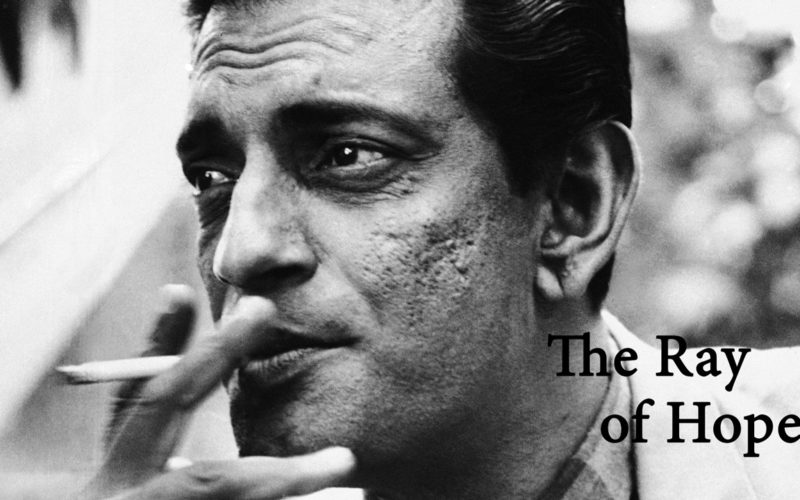- 1.0Kshares
- Share
- Tweet
- Facebook Messenger
In film criticism, a filmmaker is regarded as an auteur when he has a comprehensive, creative vision that reflects upon all his work. India’s Oscar pride, Satyajit Ray was an auteur by all means and his subject was humanism. Very few filmmakers have portrayed the different dimensions of the human character, in a social context, as Ray had done.
His body of work, today, is the subject of study in every film school in the world and as we look at his films, we can only be amazed by the sheer relevance they still have to the present day society. Let’s take a look at the intellect of Ray.
1. The Middleman (1976) – Jana Aranya
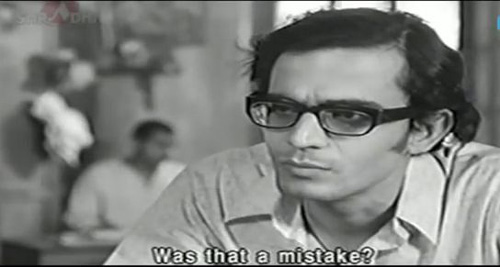
Based on a novel by Mani Shankar Mukherjee, the movie depicts the hopelessness of the urban youth in India. The protagonist, a young graduate fails to find employment after many attempts and finally makes up his mind to start his own business.
It is during his days of entrepreneurship that he learns the dirty tricks of business and resorts to them even if it destroys his principles. Eventually, he has to appease a client with a prostitute and the girl he manages to find for the job happens to be his friend’s sister. He delivers the girl to his client but broken by guilt, the last strand of his ideologies go down the window.
2. The Hero (1966)- Nayak

The film gives you a peak into the psyche of a film star like nobody lets you. A leading actor, invited to the capital for a prestigious award is compelled to travel by train as all flights are booked. In the train, he meets a journalist, who, although is not a fan of him, decides to interview the actor for the sales.
Soon, the actor confides in her some of his darkest secrets in his life as a film star. The protagonist is an actor who starts from a humble background, makes it big and and lets the fame get into his head but the narrative manages to preserve the human aspects intact, keeping the character real and relatable.
3. Distant Thunder (1973)- Ashani Shanket
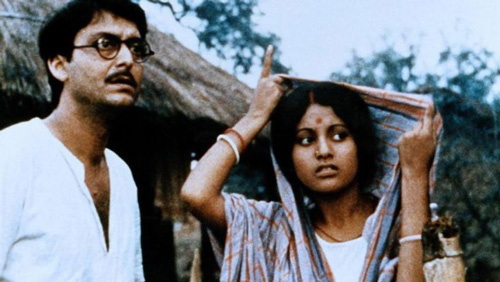
The movie illustrates the devastating famine that struck Bengal like plague in 1943. The story revolved around a young Brahman doctor/teacher and his wife in the backdrop of the cataclysmic famine that claimed 3 million lives.
The movie opens with a slow, relaxed village, insouciant of the war which rapidly turns into a melange of destitute and panic-stricken householders when food becomes scarce. The layers of human characters that surface up during such times of crisis, could not have been portrayed any better than how Ray had in this gem of a movie.
4. The Adversary (1970)- Pratidwandi
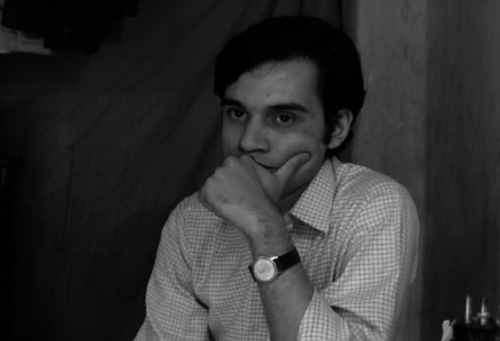
The most riveting point of the movie was perhaps, when the young protagonist is asked at the job interview to mention the most significant event in the world in the last decade and he replies ‘the plain human courage shown by the people of Vietnam’ instead of the expected ‘Man on the moon’ answer. The interviewer asks if he’s a communist and eventually, as you’d expect, he doesn’t get the job.
It was the time when the middle-class of Bengal was caught up in the social unrest caused by the Naxalite movement with rampant corruption and unemployment. It’s in these times of unrest, the story of a man who couldn’t align himself to either revolution or a career-oriented life, and chooses to move to a small town instead, has been narrated with cinematic brilliance.
5. The Big City (1963) – Mahanagar
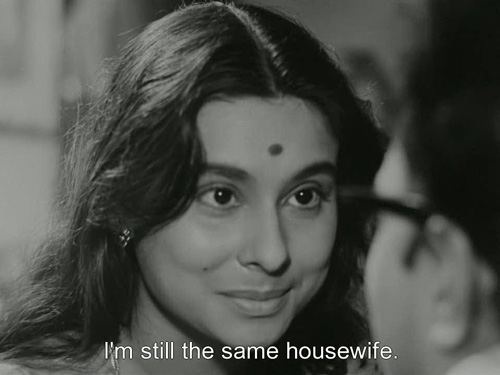
Set in the backdrop of 1950s, the story is about the struggle of a middle class woman, trying to make ends meet for her family with a humble job of a door to door saleswoman. However, she has to deal with the restrictions of patriarchy that frowns upon a woman stepping outside the house to earn a living.
The conjugal dynamics between the her and her husband go through an upheaval of emotions and the constant battle with the disapproval from her family yet their acceptance of her job out of compulsion is interesting to watch. Mahanagar is a story of liberation but ends with a moral stand on the part of the protagonist which is worth a watch.
6. Days and Nights in the Forest (1970) – Aranyer Din Ratri
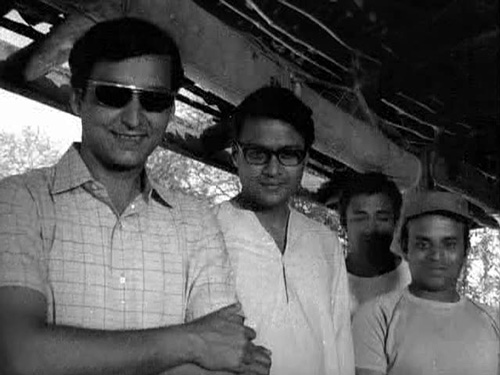
One of the most intellectually subtle works of Ray, the story is of a group of four friends, who, tired of the plasticity of city life, go to the rural areas for holiday. However, interestingly enough, the group is soon searching for city people to mingle with and manages to find a vacationing family as well. This family is of wealth and taste, and the general tendency of the middle class to seek proximity of the higher is evident in these four.
On the other hand, they create quite an ugly ruckus as one of them gets involved with a tribal woman and the rural serenity they came for were ironically almost ruined by them.
7. The Home and the World (1984) – Ghare Baire
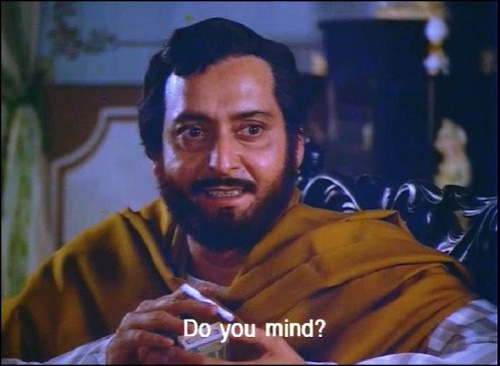
Set in the backdrop of pre-independent India, when the nationalist movement of boycotting foreign goods was in the forefront, the story revolved around an activist, his peace loving friend and his friend’s wife. Although the activist is shown in his high horses of rebellion, he’s ready to compromise on the nationalist movement when it comes to branded foreign cigarettes.
A charming hypocrite seduces his friend’s wife and his friend, although vary of the situation urges his wife to make her own decisions, step out of the house and gain perspective – a big deal in those times.
8. Song of the Little Road (1950) – Pather Pachali
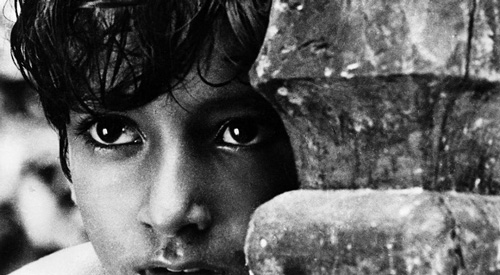
The most celebrated work of Satyajit Ray, the adaption of Bibhutibhushan Bandhopadhay’s novel, the story is of a poor family in rural Bengal. The delicate bond between a sister and brother courses its way through the fields of Kans grass, the endless rail tracks, the simple joys of life and of course, poverty.
Their father, dreams to become a poet but leaves the village for the city to earn a better living. Back in the village, the family keeps struggling and the sister, succumbing to weakness caused by fever, dies. The family decides to move out to the city and thus begins the saga of Apu, the little brother who eventually grows up to live his life, covered over the trilogy.
They’re just a few of Ray’s work and the sheer variety of deep subjects must have blown your mind by now.
- 1.0Kshares
- Share
- Tweet
- Facebook Messenger




